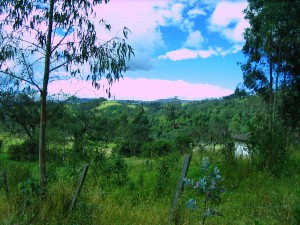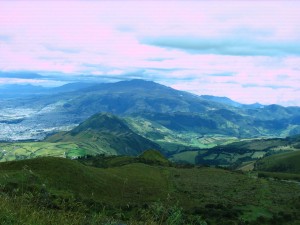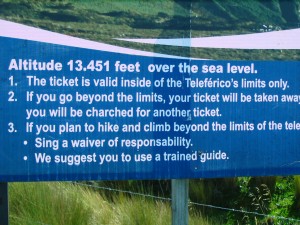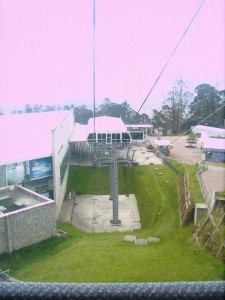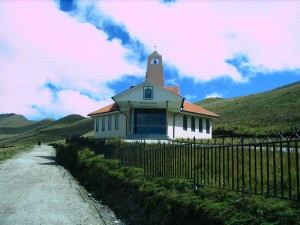Ecuador Travelogue (part 6)
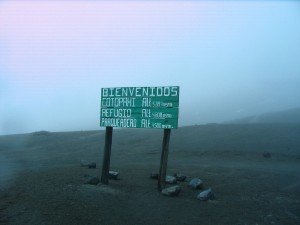
Our second last day we spent on the Biking Dutchman trip to Cotopaxi. Here’s how the trip works: you meet in Gringolandia at about 7:00 am, where they pile you into a Land Rover with a bunch of other tourists and a roof rack full of bikes. Our group was comprised of two Aussies, a Brit, two blond, Scandinavian brothers, and a German couple (I think). They drive you to Cotopaxi National Park and up the mountainside to the Parquedero, which is at 4500 meters (14763).
There’s a refugio up a little higher at 4800 meters, which, in the winter months, is right at the snow line. But I can’t tell you where the snow line is these days since it was cloudy, windy, and rainy when we got up to the Parquedero, so we couldn’t see shit. We were supposed to unload the bikes there, but it was too cold, so we drove back down the mountain a half-mile to what looked like an abandoned shelter, perhaps the old refugio. They gave us some quick instructions on how to descend, and away we went. It rapidly got warmer as we continued downhill, and when we stopped at the bottom of the slope to regather, it was warm enough to take off one or two of the five layers I was wearing.
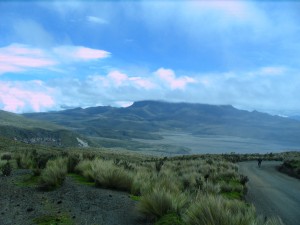
The downhill road was a dirt switchback with some pretty rocky terrain. And at the bottom of the mountainside, there was a huge, flat, treeless plateau. The road remained rocky, with some tricky patches of fine sand, but it didn’t require hard peddling. It was slightly downhill, but a very gradual downhill. Really the only indication that we were descending came from the change in vegetation. We eventually saw trees, and the final 45 minutes or so was on a road that occasionally ran through some forested patches.
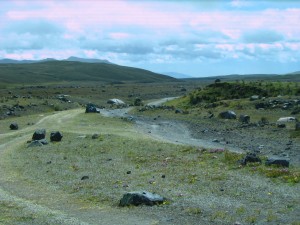
Unfortunately, less than a mile from our finish, I got a flat tire. I had to wait for the guide and the shag van to catch up, and when they did, they asked if I wouldn’t mind just calling it a day. I said sure, but when I saw them hoist the guide’s bike up to the roof of the Land Rover along with mine, I felt a little cheated. Why couldn’t I have ridden his bike for the last four minutes? I know. It’s not a big deal. But I have a thing for finishing.
